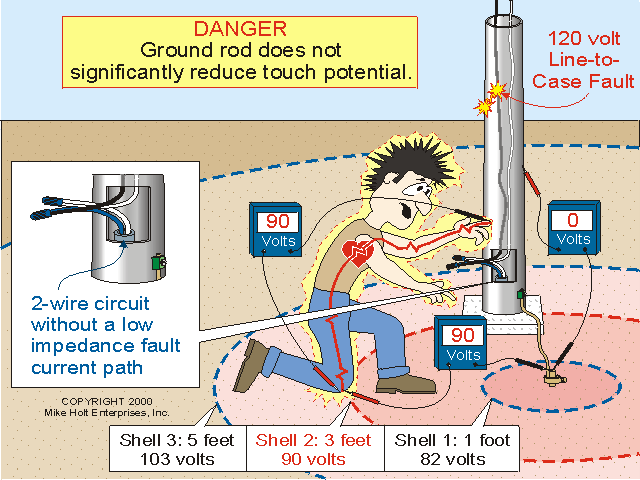kwired
Electron manager
- Location
- NE Nebraska
- Occupation
- EC
Unfortunately there is mistake in your reasoning.Since the neutral is broken and the earth resistance of the neutral at the residence side is assumed to be zero,everything bonded to the grounded service conductor will operate at 0 volts above earth ground on the residence side.So where is the catch?
Zero volts to ground will be at/very near the grounding electrode and depending on soil conditions can drop the entire voltage imposed within just inches in poor soil. In good conductive soil we are still talking about just a few feet. This is why we have to put equipotential planes around swimming pools. Everything is tied together creating same potential to those items as well as the Eq. plane, even if full 120 volts to ground is impressed upon it. Measure from those bonded items to a point that is not bonded but is earthed several feet away though and you will have voltage.
Where are you getting the assumption that the earth resistance at the residence side is zero? I only said to use zero at the transformer for demonstration purposes to make calculations simpler to point out that the grounding electrode at the residence still has a resistance, in reality the electode at the transformer will also have a resistance that needs consideration.


